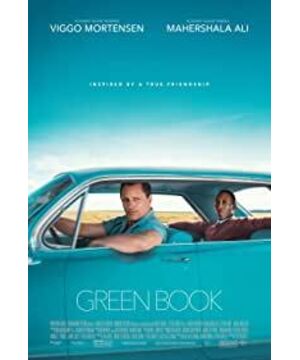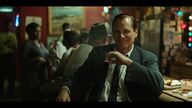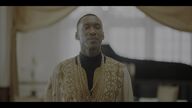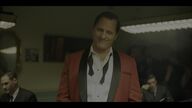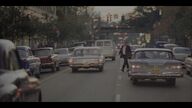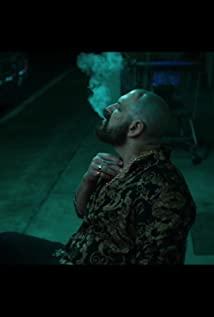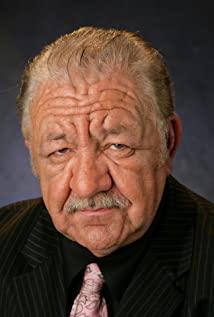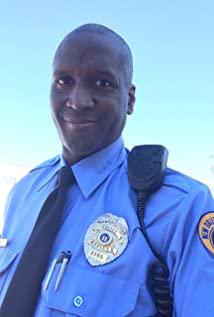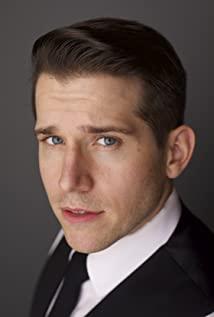In 1956, jazz musician Nat King Cole was invited to perform for the audience in the Birmingham area of the southern United States.
Taiwan spectator are all white, and Nagin Gore was the first black in white institutions invited to the show as a result, he began to show, 3K party was pushed off the stage, was a violent assault.
In [Green Book] , when the white driver wondered why Don Shirley was going to perform in the South at this time, another musician told this story.
In the [Green Book], it has been six years after this matter, but when Don Shirley and his trio team performed in the south, they also encountered various resistances and discriminations, large and small.
The black musician Don Shirley, as shown in the movie, became famous as a teenager and lived upstairs in the palace-like concert hall of the "gold and magnificent". In the words of his musician partner:
In the north, he could have lived a life supported by thousands of people, but he wanted to come to the south to suffer this crime.
Perhaps, as it is said, "becoming a genius is not enough. It takes courage to change people's minds."
In the 1960s, it was the era when the black civil rights movement represented by Martin Luther King Jr. was surging, especially in the south. Previously, the Montgomery bus boycott, the Little Rock incident, the Free Passenger Movement, and other incidents of black people fighting for racial equality were staged one after another. In the south, the KKK is active, and the white group's hatred of blacks is also becoming more and more intense.
The entire southern air was filled with the smell of burning gunpowder.
In 1962, on the eve of the climax of the affirmative movement, the black musician Don Shirley went to tour south, and the story of [Green Paper] took place during this journey.
The "Green Book" in the title was originally a direct testimony of this period of history.
The full name of the Green Book is "The Negro Motorist Green Book", which means a safe travel guide for black travelers. Its slogan is "Now we can travel without embarrassment."
In 1936, Victor Hugo Green, a post office worker in the black community of Harlem, New York, and his wife published the first "Green Book."
They compiled in the book the restaurants, hotels, hotels, and vacation destinations that were willing to host black travelers. After the first edition of 36 years, the sales of this not thick green booklet soared.
This book was not published until the mid-1960s, and with the progress of the affirmative movement, it gradually withdrew from the stage of history.
People nowadays have rarely heard of the existence of the "Green Book", but for decades at that time, this Green Book could be regarded as the bible of every black traveler.
Without it, traveling may mean humiliation and danger, especially in the southern United States.
Behind the convenience of the Green Paper, it actually pointed to the apartheid policy of "Separate but equal" in the South at that time.
After the Civil War in the 19th century, although slavery in the South was abolished, it did not change the general concept of "whites are noble and blacks are inferior."
With the emergence of new crises such as the economic downturn in the North, people quickly lost interest in the plight of the blacks in the South, and racial discrimination in the South quickly returned.
The Constitution has abolished slavery and granted blacks equal rights. Whites can only proceed from other directions to restrict blacks from contacting them.
As a result, there was a grand-sounding "isolation but equality" policy.
From the beginning of the rail transportation in Tennessee, they provided parallel and isolated carriages for whites and people of color. Seats were separated between different races, or they provided baffles to separate the areas.
What followed was that the transportation, schools, bars and other public places of various states followed suit. In the name of "African American" and "European American", blacks and whites were separated spatially. .
And these laws that stipulate the apartheid policy also have a notorious name-"Jim Crow era" (Jim Crow era).
A few years later, a mixed-race named Homer Plessy rose to challenge the bill. He deliberately got into a white carriage while riding, and was arrested.
After that, he took the state government to court. As a result, in the 1896 Plessy case, the Supreme Court ruled that Plessy lost by a 7:1 majority.
As a result, "segregated but equal" has officially obtained its legal status, and it has spread almost everywhere in southern life.
But in reality, "isolation" is real, but the so-called "equality" has never happened.
For example, white children have all kinds of school facilities, while black children often have to go to churches, sheds, and boarding houses to study. No toilets, no blackboards and other facilities have become the norm.
In Florida’s public education report in the 1930s, the investment in African-American schools was only 6% of that in white schools, and only 28 of Florida’s 67 counties had African-American high schools.
In [Green Book], Don Shirley can perform for white guests in the hotel, but cannot use the white-only restaurant, dressing room, or even the bathroom.
The dressing room for him is actually a small outrageous grocery room. He can only go to the wild to go to the toilet, eat in the opposite block, and stay in a black hotel.
"Isolated but equal" was passed by law in the "Brown Case" in 1954 and cancelled, but these isolation scenes still existed even in 1962 in the movie.
At the 1940 Oscars ceremony, the black actress Heidi McDaniels in the cast of [Gone with the Wind] won the best female supporting role for her role as a nanny, becoming the first African-American actor to win an Oscar in history.
But under the Oscar's podium, she could not sit with stars like Vivien Leigh and Clark Gable——
Because of the isolation policy, she can only sit in a small corner alone.
And at the premiere of the movie, she couldn't even appear on the stage.
Therefore, since the affirmative movement in the late 1950s, African-American fighters have targeted the segregation policy from the very beginning.
In 55 years, a black woman in Montgomery was arrested for refusing to give up her seat for white people, triggering a bus boycott campaign by black groups against the same enemies;
In 60 years, four black students were refused meals at a white convenience store in the city center, so they decided to sit in their seats and protest until the restaurant closed.
Later, similar sit-in protests swept across the country, and large-scale blacks began to occupy seats in public libraries, theaters, restaurants and other places.
In 1961, with the support of the "Race Equality Conference", black and some white students launched the "Free Passenger Movement" . They mixed their skin colors and rode through the most conservative Shennan region in buses.
On the way, they experienced fierce siege, violence and threats from the KKK, but the "Free Passenger Movement" was completed in the relay of the students.
Of course, there is also the famous and epoch-making Little Rock incident.
In 1957, when the District Court in Little Rock, Arkansas announced in accordance with the Supreme Court’s decision in the "Brown Case" of 54 years that the downtown middle school planned to admit nine blacks to school, it met with stubborn resistance from racists.
The governor of the state in order to win votes and condone the mobs to gather outside the school gates in Little Rock, to prevent black students from enrolling.
A 13-year-old white girl said to the reporter in front of the camera: "If God wants blacks and whites to go to school together, they will not create whites and blacks."
But in the end, it was the then-President Eisenhower who ordered the deployment of troops, and the paratroopers with bayonet rifles finally escorted the black students into the school.
However, only one year after the story of Don Shirley’s south tour in [Green Book], Martin Luther King organized an unusually sensational large-scale demonstration in the southern Birmingham. The whole country responded positively and grand The civil rights movement thus reached its climax.
The "Green Paper" finally completed its mission in 1966 and withdrew from the stage of history after the last issue was published. The apartheid policy gradually came to an end with the massive civil rights movement.
After decades of hard work, even a complete struggle in the 1950s, 1960s, and 1970s, the black people in the south finally regained the many rights they had promised long ago.
-
Author/curl
This article was first published on the WeChat public account [Pocier]
View more about Green Book reviews


